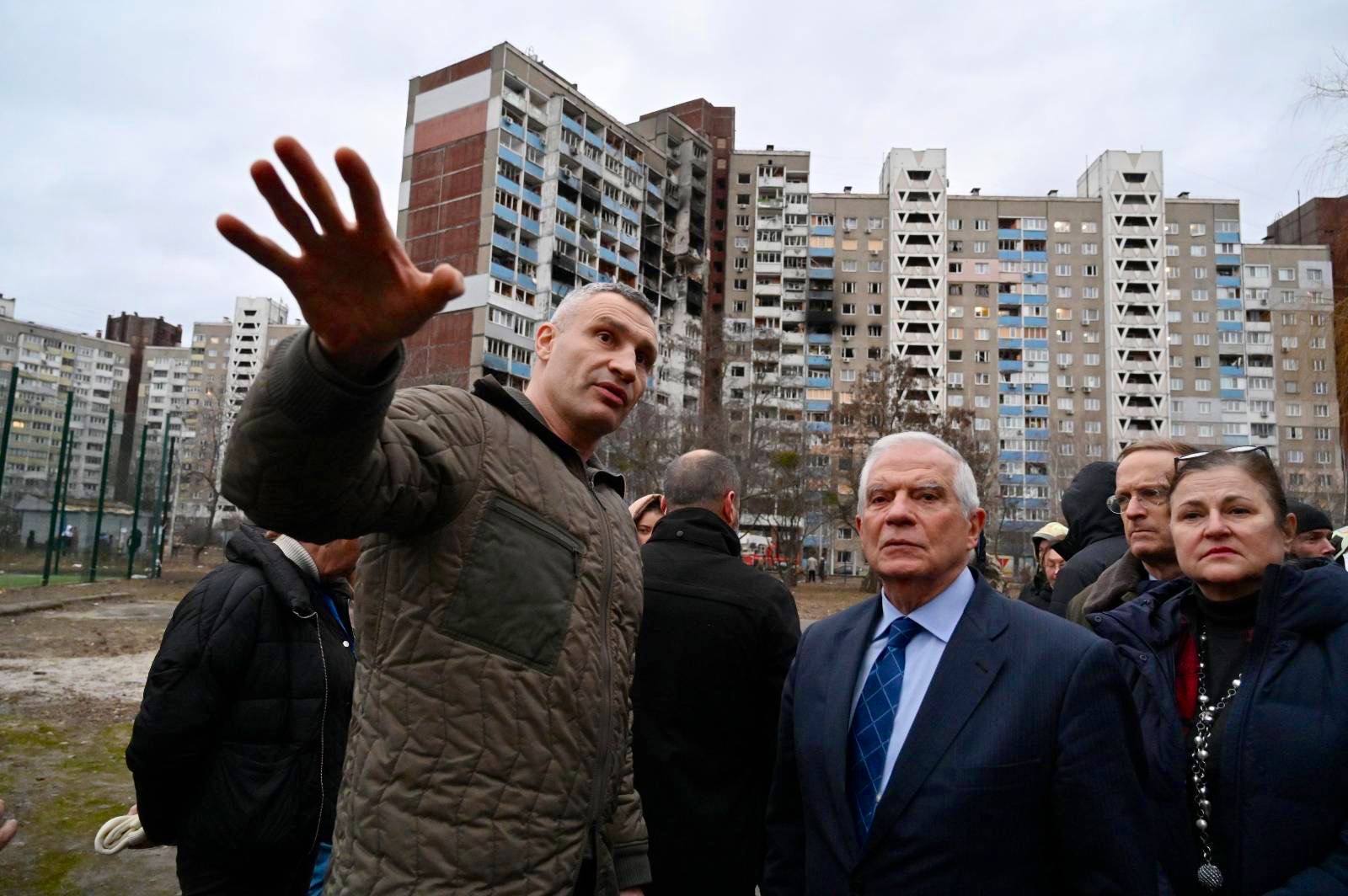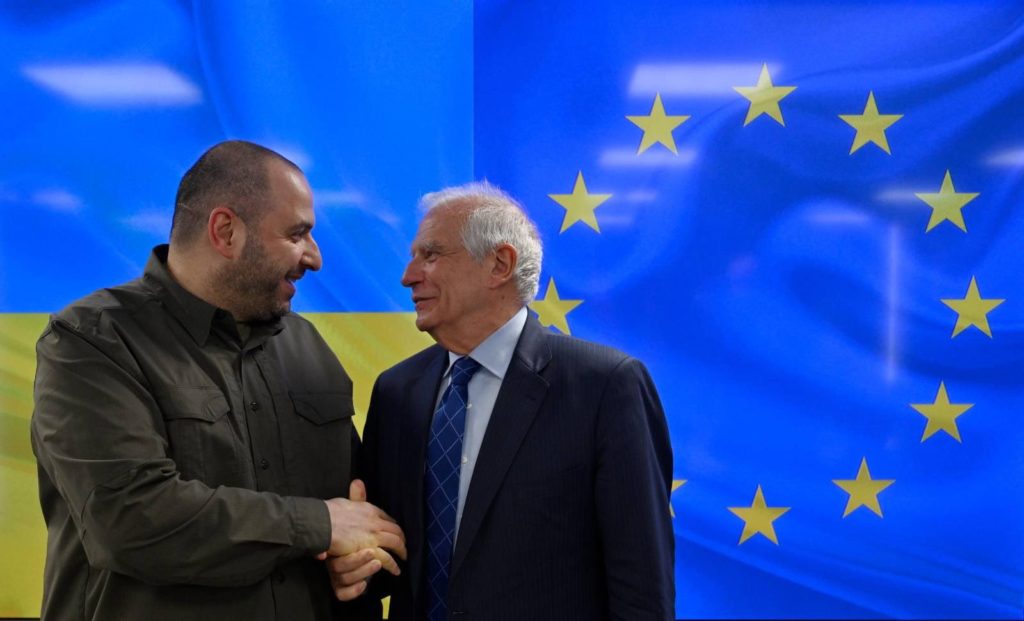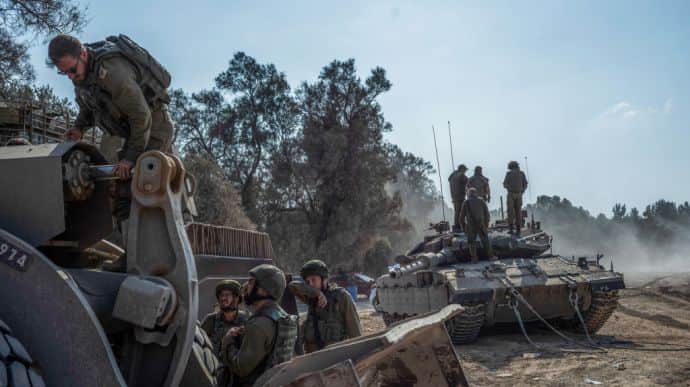EU unveils sweeping strategy to get “defense ready” amid Russia-Ukraine war
EU will ramp up arms production, boost cooperation, and strengthen its defense industrial might in the face of rising geopolitical threats.

The European Union has unveiled a new strategy aimed at boosting the bloc’s defense industrial base and military preparedness in the face of Russia’s protracted war against Ukraine and rising geopolitical tensions.
In a major policy address on 11 March, Josep Borrelll, the EU’s High Representative for Foreign Affairs and Security Policy, laid out the urgency of ramping up arms production capabilities after two years of arming Ukraine from existing stockpiles that are now depleted.
“After two years of a high intensity war, existing stocks are depleted and the conflict has evolved from a war of stocks to a war of production,” Borrelll stated. “We need to boost our defense industrial and technological base. It was not clear to anybody before Russia’s war of aggression against Ukraine, but now it has become common sense.”
Overhaul of EU’s defense manufacturing sector
The new European Defence Industrial Strategy, approved by the European Commission last Tuesday, represents a sweeping overhaul of the bloc’s fragmented defense manufacturing sector. It calls for exponentially increasing joint arms procurement between EU member states to 40% by 2030, up from a paltry 18% in 2021 despite longtime targets.
“In Europe, we do not have a Pentagon that concentrates demand and drives the industry. We have to overcome this fragmentation through more cooperation, incentivising more joint procurement of defense capabilities and projects of common European interest,” Borrelll said.
To achieve this, the strategy envisions setting up a new Defense Industrial Readiness Board to identify collaborative purchasing opportunities and set shared industrial production goals across the EU. It proposes a slew of financial incentives like additional funding for joint projects, cutting bureaucratic red tape, and exempting them from value-added tax.
Borrelll stated the highly concentrated nature of Europe’s defense sector, with just a handful of countries like France and Germany accounting for 90% of production, must be disrupted. The industry currently supplies only 40% of the equipment used by EU militaries.
“For the last two years, this proportion has even been much higher due to the need to increase our capabilities very rapidly: between the start of Russia’s war of aggression and June 2023, 78% of defense acquisition by EU member states were made outside the EU,” he said. According to the Carnegie Endowment for International Peace, the United States alone represents 63%.
Boosting EU defense investment
Ensuring reliable financing from both private and public sources is another core pillar. The strategy calls for mobilizing the European Investment Bank (EIB) to invest in boosting manufacturing capacity, though not directly purchasing weapons, which Borrelll said “can be a key driver.”
From 2025-2027, €1.5 billion from the EU’s common budget will fund defense industrial initiatives. However, Borrelll acknowledged “much more important financial means will be needed” in the next long-term EU budget, making an argument for joint borrowing.
Currently, the defense industry in the EU has an annual turnover of €70 billion and employs 500,000 people. At the same time, in 2022, defense investment by EU Member States amounted to €58 billion, almost 4 times less than in the US.
“We borrowed in common successfully to deal with the COVID-19 pandemic, I do not see why we should not do it when Russia threatens our very security, and we urgently need to boost our defense capabilities and our defense industry,” he said.

Partnership with Ukraine
The plan also prioritizes strengthening defense industrial cooperation with partners like Ukraine, which Borrelll described as having a “strong and innovative defense industrial base” after visiting a drone manufacturing plant there.
Specific proposals include hosting an EU-Ukraine Defense Industry Forum this year and opening a European Defense Innovation Office in Kyiv. Borrelll even raised the possibility of using frozen Russian assets to purchase arms for Ukraine or bolster its defense sector if all 27 EU members agree, though those funds were originally slated for rebuilding Ukraine.
“If member states agree, it would make sense to use these resources to procure additional military support for Ukraine through the European Peace Facility. In the longer term, we could also use these funds to support the Ukrainian defense industrial base,” he said.
In particular, the European Commission aims to grant Ukraine full membership in the European Defence Investment Programme (EDIP), marking a significant step towards integrating Ukraine into the EU’s defense industry support scheme, according to a draft proposal reported by Euractiv. The move is seen as a strategic effort to contribute to Ukraine’s defense recovery, reconstruction, and modernization while strengthening European joint procurement of weapons and bolstering the bloc’s military-industrial complex.
With billions invested, Ukraine-EU defense cooperation gains momentum
Borrelll portrayed the sweeping strategy as vital for European “defense readiness” given the high-stakes war and an increasingly turbulent geopolitical environment with potential new threats on the horizon.
“We need to become ‘defense ready’. I am confident that our member states will show the political will and provide the necessary resources to make the bold leap forward that is needed to take control of our own destiny,” he declared.
The proposal would dramatically reshape military investment and procurement policies across the bloc. It also calls for strengthening the European defense industry commitments in the framework of the Permanent Structured Cooperation (PESCO)
Ambitious defense industrial strategy
With tensions rising with rivals like Russia and China, Borrelll insisted overhauling Europe’s defense industrial production might is “a prerequisite if we want to be able to strengthen our defense capacity.”
Overall, the plan is one of the most assertive efforts yet by the EU to bolster its military capabilities and reduce dependence on US and other foreign arms sources. Whether European leaders can marshal the resources and political unity to realize Borrelll’s vision remains to be seen.
Last week, the European Commission and High Representative have revealed the European Defense Industrial Strategy (EDIS) in response to growing tensions, particularly Russia’s war against Ukraine. EDIS aims to enhance the EU’s defense industry competitiveness, emphasizing collaborative procurement, increased defense trade within the EU, and a goal for Member States to procure at least 50% of their defense budget within the EU by 2035.
The Strategy sets indicators to measure EU Member States’ progress towards industrial readiness. EDIS calls Member States to:
- By 2030, aim to collaboratively procure at least 40% of defense equipment,
- ensure that intra-EU defense trade represents at least 35% of the EU defense market value, and
- gradually increase procurement within the EU to reach 50% by 2030 and 60% by 2035.
On 14 November 2023, 27 EU Ministers of Defence approved the 2023 EU Capability Development Priorities, informed by lessons from Russia’s invasion of Ukraine, focusing on short, medium, and long-term planning to address defense gaps and future challenges. Key areas include land-based precision strike capabilities, air and missile defense systems, underwater warfare, sustainable logistics, and training for new threats.
Sophia Besch, a fellow in the Europe Program at the Carnegie Endowment for International Peace, suggests that with this plan, “For the first time in decades, there might just be political space in Europe for an ambitious rethink of defense industrial policy.”
Related:
- European Commission presents first-ever European Defense Industrial Strategy
- Euractiv: EU aims Ukraine to join bloc’s defense industry support scheme
- EU market chief aims for €100 bn EU defense fund
- EU Parliament urges EU to give Ukraine whatever it needs



